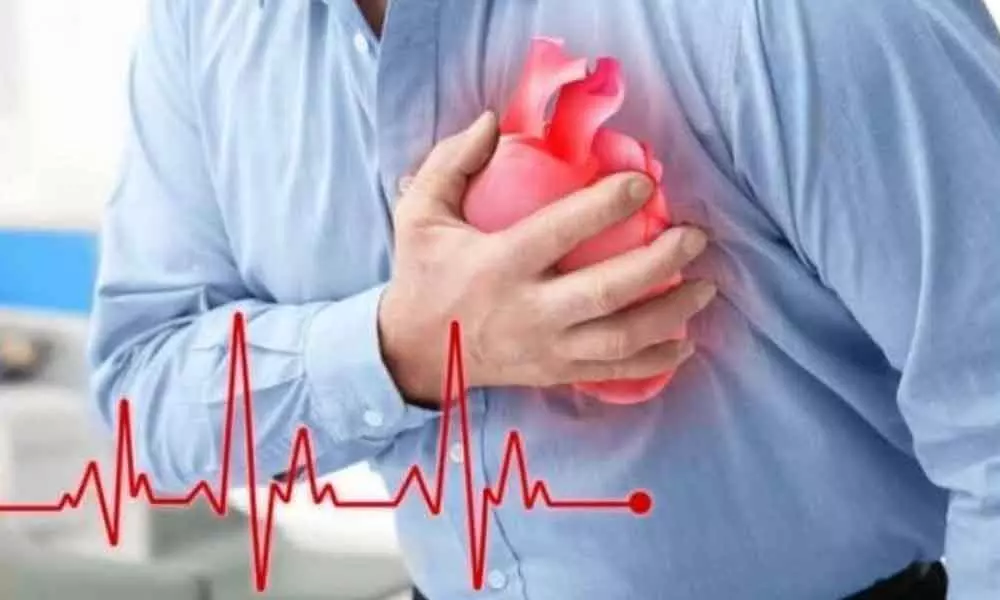Mini stroke is different from regular stroke

Mini stroke is different from regular stroke
A stroke can be devastating not only for the person who gets one, but for the entire family. This unfortunate episode can result in premature death and lifelong disability.
A stroke can be devastating not only for the person who gets one, but for the entire family. This unfortunate episode can result in premature death and lifelong disability. In India, the incidence rate of stroke is estimated to be 119 to 145 per 100,000 people and we see 1.44 to 1.64 million cases of strokes annually. Sometimes when we do not heed the warning signs of stroke, we end up becoming victims of this devastating episode. One such sign is the Transient Ischaemic Attack (TIA) or mini-stroke. It has been observed that the risk of stroke in the first three months after a TIA is 2-17 percent. About 33 percent of those with a history of TIA have a major stroke within a year without any treatment.
TIA cause
When the blood flow to the brain cuts off for a short while (less than 5 minutes) it causes a transient neurological symptom same as is observed in stroke but are rapidly reversible. This is known as TIA. TIA is also referred to as mini-stroke because it is like a miniature version of a full-blown stroke. It causes less damage but it sure needs emergency care without delay.
Difference from stroke
When an artery that is supplying blood to the brain gets blocked due to a blood clot, it causes oxygen starvation resulting in TIA. In a TIA, such a temporary clog is usually pushed along and is broken down. Thus, the normal flow of blood to the brain returns quickly. Symptoms of a TIA usually subside within an hour (typically less than 15 minutes) but may last up to 24 hours in some cases. Quite contrary, in an ischemic stroke, the brain is oxygen-deprived for a longer period. This causes more damage and brings long-lasting effects that can be fatal and cause permanent disability or death.
Risk factors
Apart from the risks that are not under our control like age and family history, in general women have a higher risk of stroke/TIA than men. Other health conditions such as obesity, carotid artery disease, high BP, high cholesterol, diabetes, and preexisting heart conditions are also found to increase the odds of stroke/TIA. Lifestyle choices like excess smoking, alcohol consumption, eating foods high in cholesterol, and using drugs such as amphetamines, cocaine, and heroin can increase the risk.
Warning signs and symptoms
We must attempt to remember the term "FAST" (which denotes Face, Arms, Speech, Time). These are mainly seen if a person is having a TIA. These include:
• The facial droop may be observed where the eyes or mouth may droop to one side. One may also experience trouble smiling.
• Problems related to speech such as slurred, garbled, or difficult to understand. Also, one may find it difficult to gather the right words.
• Weakness or numbness of limbs may be experienced. There might be trouble lifting or holding up the arms.
• Sometimes one may also notice balance and coordination related troubles, blindness or transient blurring of vision, inability to move one side of the body, dizziness, confusion, and difficulties in understanding others.
Diagnosis and Management
Diagnosis is generally established through thorough physical examination, neurological tests and various imaging techniques (MRI, Angiography, etc). Medications such as blood-thinners, anti-cholesterol medications with or without the use of minimally invasive procedures (carotid angioplasty/stenting) and surgical procedures (Carotid endarterectomy) may be advised depending upon the severity of the TIA. When the symptoms of a TIA stroke, although it may pass, one should get medical help immediately. It must be remembered that there is a lot of uncertainty about whether the blood flow will restore on its own or not. It is impossible to predict if one is having a TIA or stroke because the symptoms are more or less the same. Furthermore, in the current pandemic situation, the Covid-19 can lead to the development of blood clots in the vessels supplying the brain. This can subsequently progress to TIA and stroke.



















